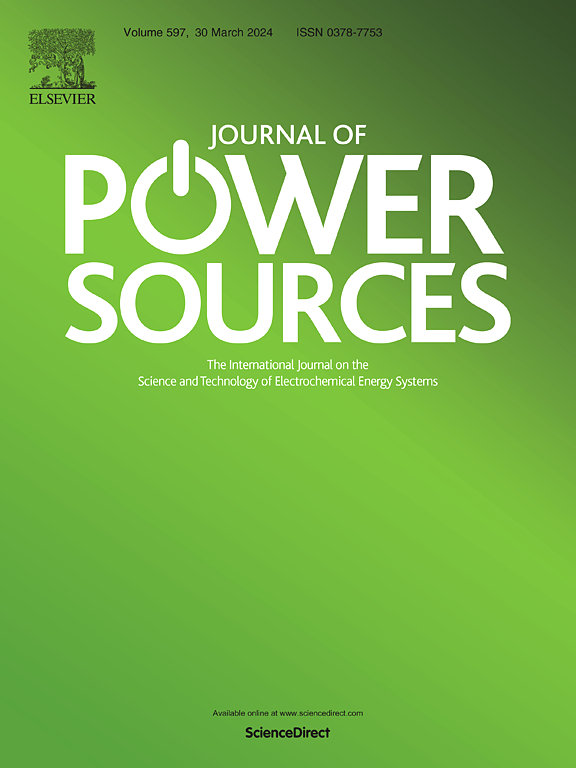Fabrication of onion-like carbon frameworks and uniform carbon coating layer at Na4Fe3(PO4)2P2O7 for synergistically improving conductivity and structural stability
IF 7.9
2区 工程技术
Q1 CHEMISTRY, PHYSICAL
引用次数: 0
Abstract
Na4Fe3(PO4)2P2O7 (NFPP) materials are promising candidates as cathodes in sodium-ion batteries (SIBs) due to their low cost, environmental friendliness, and high specific capacity. However, the electronic conductivity of this polyanionic material is constrained by weak electron transfer within the Fe-O-P-O-Fe pattern, limiting the high-rate performance of batteries. Herein, inexpensive bitumen is selected as a coating precursor to prepare NFPP@C composite cathode materials. After low-temperature carbonization at 480 °C, a protective layer forms with onion-like carbon as the framework and an ultrathin carbon coating uniformly cladding the NFPP. This significantly enhances the electronic conductivity while protecting the material from interfacial side reactions, thereby stabilizing the structure. It exhibits a low charge transfer resistance (Rct, 57 Ω at 3.25 V), high discharge specific capacity (115.8 mAh g−1), good high-rate capability (59.8 mAh g−1 at 20 C), and excellent cycling stability (91.0 % capacity retention after 1600 cycles at 10 C). This strategy provides an effective approach for optimizing the performance of sodium-ion polyanionic cathode materials.

在Na4Fe3(PO4)2P2O7上制备洋葱状碳骨架和均匀碳涂层,协同提高电导率和结构稳定性
Na4Fe3(PO4)2P2O7 (NFPP)材料具有成本低、环境友好和高比容量等优点,是钠离子电池(sib)阴极的理想材料。然而,这种聚阴离子材料的电子导电性受到Fe-O-P-O-Fe模式内弱电子转移的限制,限制了电池的高倍率性能。本文选择廉价沥青作为涂层前驱体制备NFPP@C复合正极材料。480℃低温碳化后,形成以洋葱状碳为骨架的保护层,超薄碳涂层均匀地包覆在NFPP表面。这大大提高了电子导电性,同时保护材料免受界面副反应的影响,从而稳定了结构。它具有低电荷转移电阻(Rct, 57 Ω, 3.25 V),高放电比容量(115.8 mAh g−1),良好的高倍率容量(59.8 mAh g−1,20 C),以及出色的循环稳定性(在10 C下1600次循环后,容量保持率为91.0%)。该策略为优化钠离子聚阴离子正极材料的性能提供了有效途径。
本文章由计算机程序翻译,如有差异,请以英文原文为准。
求助全文
约1分钟内获得全文
求助全文
来源期刊

Journal of Power Sources
工程技术-电化学
CiteScore
16.40
自引率
6.50%
发文量
1249
审稿时长
36 days
期刊介绍:
The Journal of Power Sources is a publication catering to researchers and technologists interested in various aspects of the science, technology, and applications of electrochemical power sources. It covers original research and reviews on primary and secondary batteries, fuel cells, supercapacitors, and photo-electrochemical cells.
Topics considered include the research, development and applications of nanomaterials and novel componentry for these devices. Examples of applications of these electrochemical power sources include:
• Portable electronics
• Electric and Hybrid Electric Vehicles
• Uninterruptible Power Supply (UPS) systems
• Storage of renewable energy
• Satellites and deep space probes
• Boats and ships, drones and aircrafts
• Wearable energy storage systems
 求助内容:
求助内容: 应助结果提醒方式:
应助结果提醒方式:


